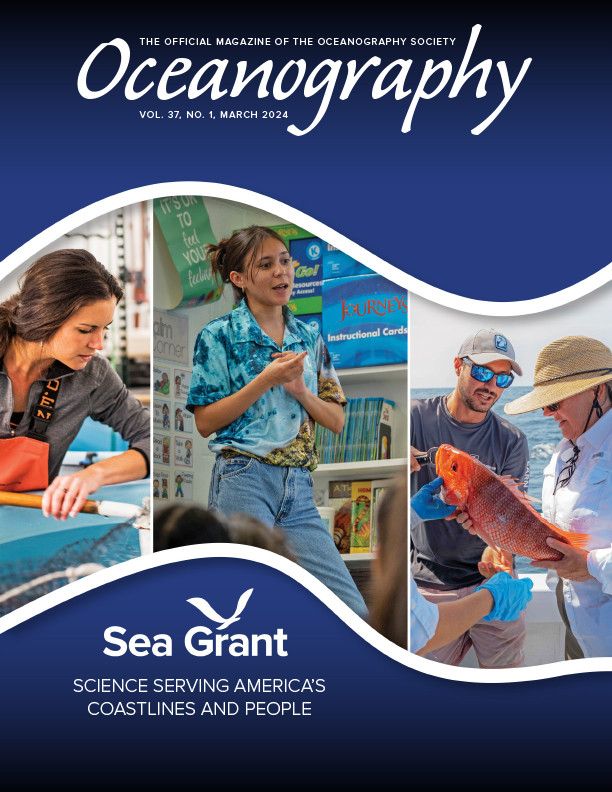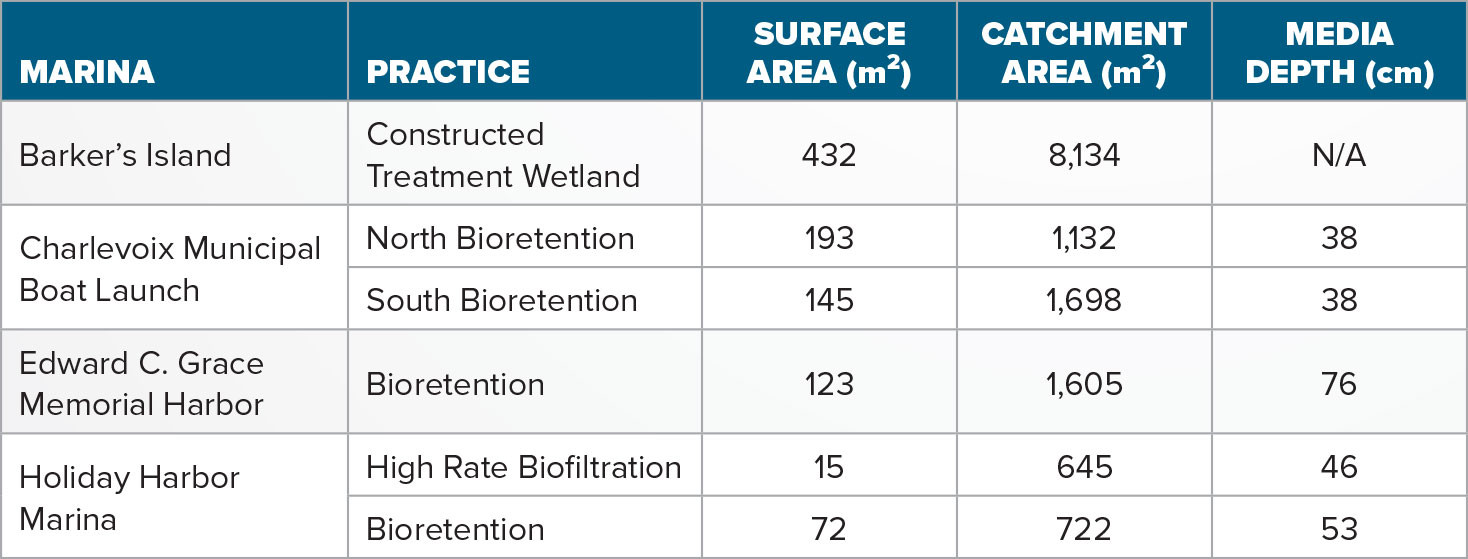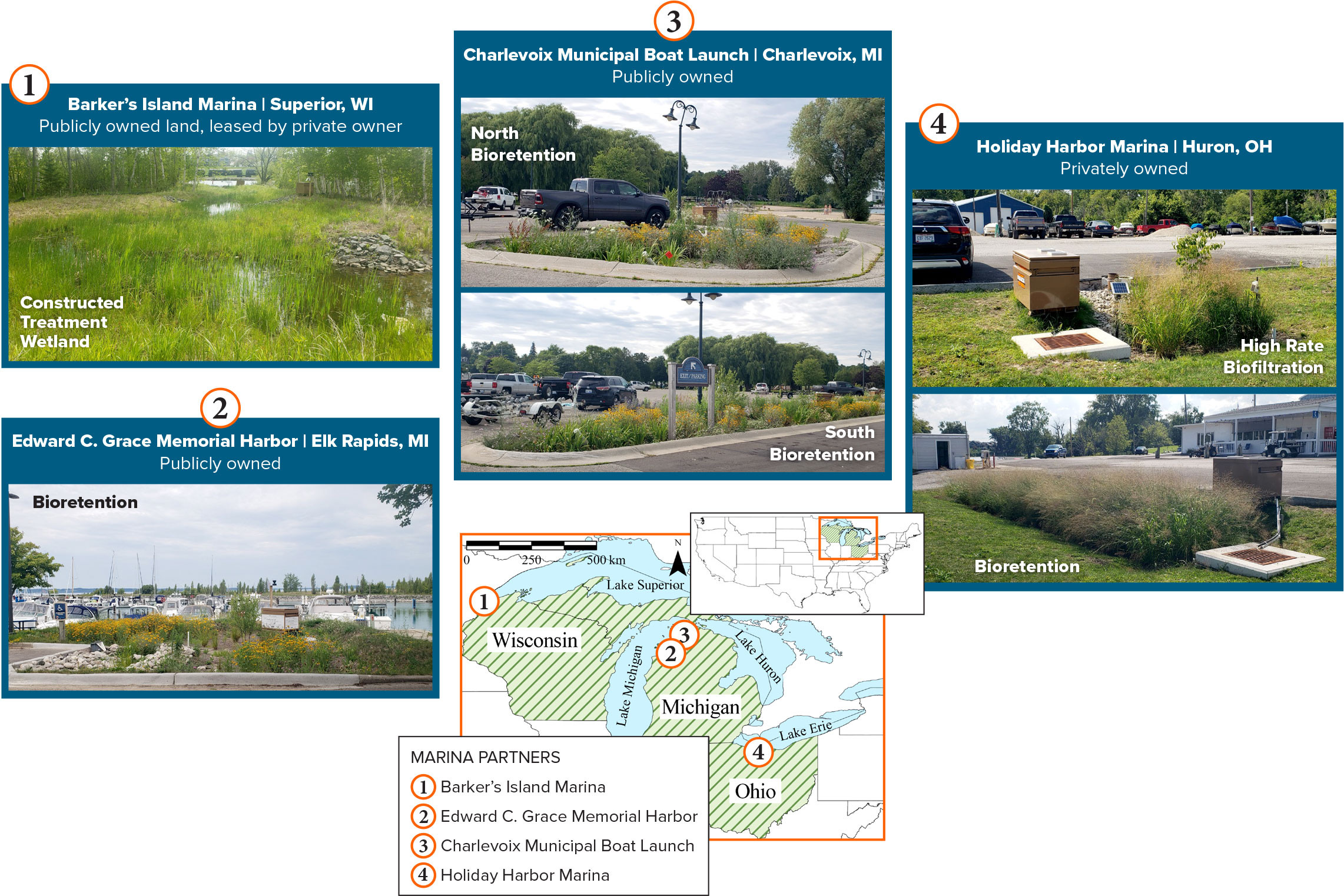Full Text
Introduction
One-third of recreational boats in the United States are located at marinas in the Great Lakes (USACE, 2008). Though these marinas depend on a healthy coastal environment, many of them carry out boat maintenance and repair that generate oils and greases, heavy metals (particularly copper, a major component of boat paint), sediment, and nutrients that can be mobilized by stormwater and directly conveyed to nearshore waters (Jessop and Turner, 2011). Given projections of increased precipitation and runoff for the Great Lakes region (Byun et al., 2019), marinas serve as a “last chance” opportunity to reduce stormwater volumes, peak flow rates, and pollutant concentrations. Here, we discuss how improved design and retrofits to existing marinas can mitigate runoff pollution (McAllister et al., 1996).
Green infrastructure (GI) practices such as bioretention, constructed treatment wetlands (human-made versions of natural wetlands that are also called “constructed wetlands”), and permeable pavements can improve aesthetics (Tzoulas et al., 2007), public perception of stormwater management (Keeley et al., 2013), and pollution treatment (Clary et al., 2020). However, GI practices have not been evaluated for treatment of marina-specific pollution, nor is there sufficient guidance on the design and implementation of GI in marina settings (McMahon, 1989).
To improve stormwater management, four Great Lakes coastal marinas in Ohio, Michigan, and Wisconsin partnered with their respective Sea Grant programs to implement GI. This collaborative project involved educational, outreach, and applied research components to connect with coastal communities and study the impacts of GI implementation at marinas.
Methodology
Clean Marina Stormwater Toolkit
The Great Lakes Clean Marina Network (GLCMN), a regional forum of marina and boatyard stakeholders, was leveraged to increase awareness of GI at marinas through educational workshops and incorporation of GI practices into Clean Marina certification guidance documents. One component of this project was development of the Clean Marina Stormwater Toolkit (https://www.michiganseagrant.org/great-lakes-clean-marina/publications-and-resources/clean-marina-stormwater-toolkit/). The Toolkit includes a decision support tool (DST), an interactive virtual reality model depicting GI practices at a marina, and a list of GI contractors operating in the Great Lakes area that can answer questions about installation and maintenance. The website also lists other educational resources on GI as well as stormwater best management practices.
As the cornerstone of the Toolkit, the DST was created to assist marina operators in determining which GI practices are most suitable for their sites. It was developed based on feedback from a marina stakeholder survey distributed to state project managers; marina owners and operators, boaters, and practitioners who attended clean marina workshops; site visits; conferences; and at a GLCMN webcast meeting. Data were then integrated to build a simplified decision table that includes information about ideal placement, maintenance needs, marina-specific benefits, and approximate installation costs.
Green Infrastructure Implementation and Applied Research
Sea Grant outreach staff approached marinas based on their potential interest in GI implementation, involvement in the Sea Grant Clean Marina program, and onsite technical feasibility of construction. Four marinas were selected along Lakes Superior, Michigan, and Erie due to their enthusiasm for the project, commitment to allowing GI performance monitoring, and capacity to maintain installed practices. Site-specific engineering designs were developed that accounted for marina preferences, ease of installation, functionality, monitoring, long-term maintenance, and typical characteristics of marinas, including high water tables. A treatment wetland, four bioretention cells, and a high rate biofiltration system were constructed, distributed among the four marinas (Table 1, Figure 1). After construction, each practice was monitored to determine its impact on stormwater volumes, peak flow rates, and loading rates of metals, nutrients, and sediment.
TABLE 1. Design characteristics of green infrastructure practices constructed at Great Lakes marinas. > High res table |
|
|
Project Results and Future Work
Partnering with marinas resulted in greater awareness of the opportunities to improve stormwater management in Great Lakes communities. Outreach materials (e.g., fact sheets, posters, and trifold panels) were developed for each GI installation for distribution to marina stakeholders; placement on Sea Grant, GLCMN, and national Clean Marina Initiative websites; and inclusion in the Clean Marina online classroom. The GI practices also permanently display educational signage explaining the project with QR codes linked to the Toolkit. Each installed practice catches the attention of passersby and marina patrons and serves as a demonstration site for improving marina stormwater management. Monitoring results for each GI practice are included in deliverables and have been developed into manuscripts to further stormwater and coastal management research.



